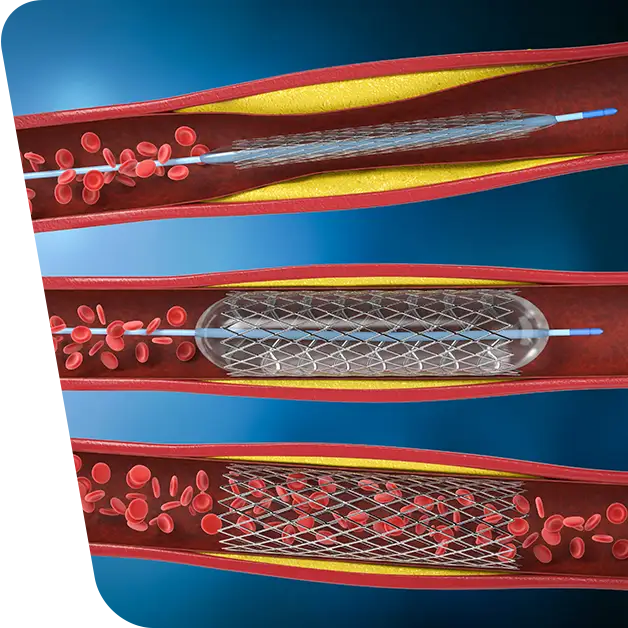Table of contents
ToggleWhat is Doppler ultrasound?
Doppler ultrasound is a non-invasive test that can be used to estimate blood flow through blood vessels by reflecting high-frequency sound waves (ultrasound) off circulating red blood cells. A regular ultrasound scan uses sound waves to produce images, but cannot show blood flow.
Doppler ultrasound is an advanced method used to assess and interpret the blood flow dynamics of the lower limbs. It is based on the Doppler principle, which refers to the variation in the frequency of sound waves reflected from red blood cells as a function of their speed and direction of travel.
Advantages of Doppler ultrasound
Doppler ultrasound has revolutionised the field of medical imaging and has brought many benefits to both medical professionals and patients. Here are some of the most notable advantages:
- High-resolution detail: Thanks to advanced technology, Doppler ultrasound can provide clear and detailed images of blood flow, allowing doctors to identify any abnormalities or obstructions with great accuracy.
- Comfort: Unlike other imaging methods that require radiation or contrast agents, Doppler ultrasound is completely non-invasive, which means minimal risk to the patient and an increased level of comfort during the procedure.
- Rapid diagnosis: The ability to visualise blood flow in real time allows doctors to provide a prompt diagnosis, essential in urgent cases or when time is of the essence.
- Versatility: Doppler ultrasound is applicable in many medical settings, from cardiology to vascular medicine, offering solutions tailored to the specific needs of each patient.
Differences between Doppler Ultrasound and Standard Vascular Ultrasound
Unlike traditional vascular ultrasound, vascular Doppler ultrasound specialises in assessing blood flow, providing detailed information about the direction, velocity and volume of blood. It facilitates a much more accurate and rapid diagnosis of vascular conditions.
What happens during a Doppler analysis?
The patient will be positioned in a comfortable manner and a special gel will be applied to the area to be examined, facilitating the transmission of sound waves. An instrument called a transducer will be used to transmit and receive sound waves, and the images will be viewed in real time on a screen. This allows the doctor to analyse the blood flow and identify any abnormalities.
Standard vascular ultrasound provides a view of vascular structures such as arteries and veins, highlighting possible vessel abnormalities or blood clots. It is often the first step in assessing vascular conditions, allowing the doctor to identify areas where blood flow may be impaired or blocked.
Doppler ultrasound, on the other hand, goes one step further, providing not only images but also a real-time assessment of blood flow. It measures the frequency variations of ultrasound reflected from moving blood cells, providing detailed information about the direction, speed and volume of blood. Using Doppler technology, doctors can identify abnormal blood flow velocities, which can indicate stenosis, turbulence or other vascular conditions.
Duration of Vascular Doppler Test
The Vascular Doppler test takes on average between 30 minutes and one hour. The exact duration may vary depending on the complexity of the case and the details the doctor wants to investigate.
How to prepare for the Doppler test?
For most patients, no special preparation is needed. It is recommended, however, that you wear loose-fitting clothes and inform your doctor if you are taking medication or have certain medical conditions. In some cases, it may be necessary to avoid coffee or other stimulants a few hours before the test.
Is there any risk or pain with this procedure?
Doppler ultrasound is completely non-invasive and painless. Without using radiation, it is considered one of the safest methods of investigation. Sometimes the patient may feel a slight pressure or a cold sensation due to the gel applied, but these do not cause discomfort.
Who is it recommended for?
Lower limb ultrasound is indicated for those with symptoms of vascular disease, such as swelling of the legs, pain or ulcers. It is also recommended for people with risk factors such as diabetes, high blood pressure or a family history of vascular disease.
Fees and Appointments
At our clinic, the price of Doppler ultrasound is from 250 to 500 LEI.
To benefit from our expertise, schedule your appointment at the VenArt clinic.







